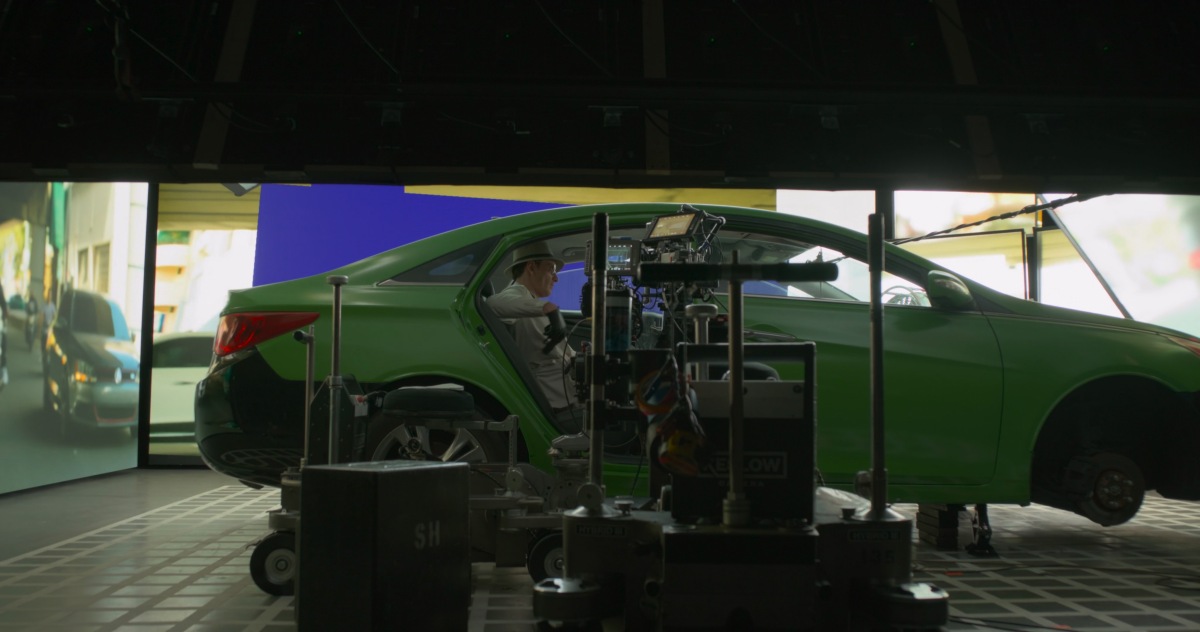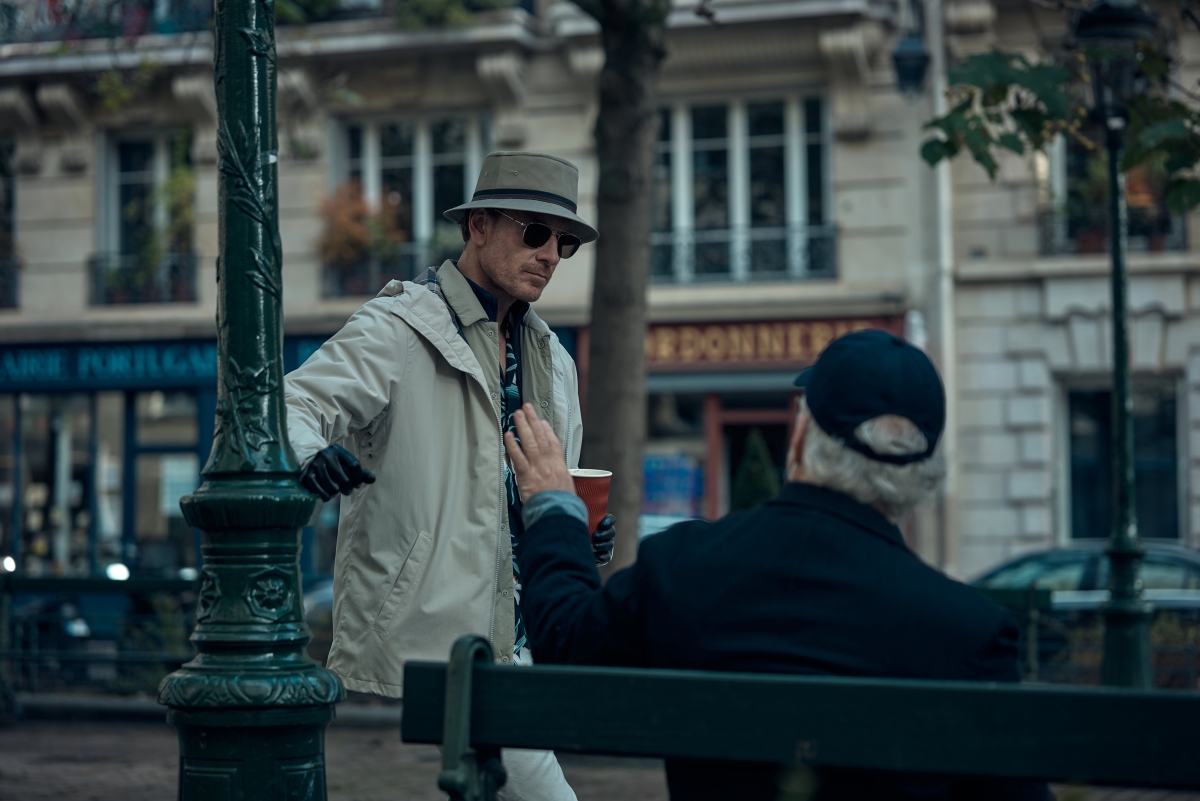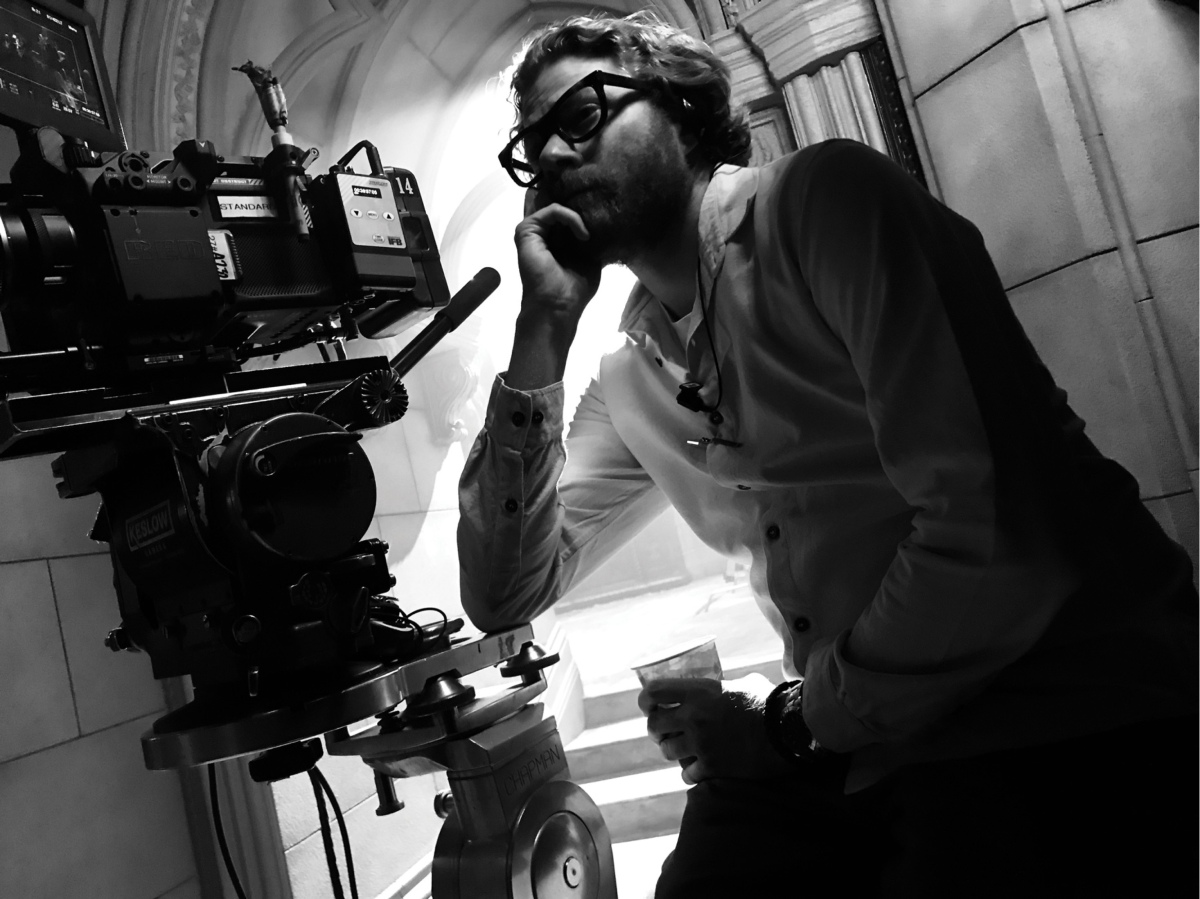Miles Crist
January 23, 2024
Tag: Miles Crist
“The Killer” Behind the Scenes Still Photographs by Miles Crist
Making Mank
Director David Fincher and cinematographer Erik Messerschmidt shoot a black-and-white masterpiece for the 21st century.
February 12, 2021
Netflix Queue
It’s a milestone for any up-and-coming cinematographer, landing that first feature film assignment. For Erik Messerschmidt, that all-important project turned out to be Mank, David Fincher’s ambitious chronicle of Herman Mankiewicz and how the irascible screenwriter came to pen the first draft of what became Orson Welles’s cinematic landmark Citizen Kane.
On paper, Mank could not have been more daunting. Messerschmidt would be working side by side with a famously exacting filmmaker, on a high-profile drama starring Oscar winner Gary Oldman in the title role. He’d also be shooting entirely in black and white.
“I was like, Oh cool, I get to do black and white,” Messerschmidt recalls. “Then I realized how naïve that was, and it freaked me out. It really freaked me out.”
Fortunately, Messerschmidt had some history with Fincher. He had worked as a gaffer on the director’s 2014 thriller Gone Girl, and deeply appreciated his direct communication style and the specificity of his vision. Impressed by Messerschmidt’s pragmatism and work ethic, Fincher subsequently hired him for the F.B.I.-profiling drama Mindhunter, and the professional relationship deepened from there.
When Fincher turned his sights to Mank, he knew whom to call. “I’m a big believer in multidisciplinary thinking,” he explains. “Erik was obviously somebody who knew how to run his manpower, but he could also speak to his crew in myriad ways that imparted slightly different nuances. He can split hairs in terms of foot-candles or T-stops or F-stops but also have a conversation about Carol Reed or how Marlon Brando never hit his mark.”
Together, Fincher and Messerschmidt plotted how best to shoot the character-driven period drama, which was written by the director’s late father, Jack Fincher. One of the most challenging sequences was a nighttime stroll taken by Mank (Oldman) and the screen siren Marion Davies (Amanda Seyfried) through the palatial grounds of Hearst Castle. Onscreen, the friends are bathed in moonlight, yet those scenes were actually shot during the day using a classic Hollywood camera technique known as day for night. (The sequence was filmed largely on location at Pasadena’s Huntington Library, Art Museum, and Botanical Gardens; the menagerie of animals in the background was added in digitally during post-production.)
The scope of the production might have proved overwhelming were it not for the rapport between director and cinematographer. “All we do all day is ask questions of the people that we’re working with. I was completely thrilled to be working for someone who had answers to those questions and who was genuinely interested in and curious about what it was that we were doing,” Messerschmidt says. “Being in a situation where you can have a really productive conversation with the director, that is so rare and so important.”
The duo spoke to Queue about what makes their partnership work.
Settling the Score
Director David Fincher talks the music of Mank with composers Trent Reznor and Atticus Ross.
Jon Burlingame
February 12, 2021
Netflix Queue
Trent Reznor and Atticus Ross have written a dozen film and television scores together. Not just partners in Nine Inch Nails, they have won multiple awards for music in visual media: an Oscar and a Golden Globe for The Social Network, a Grammy for The Girl with the Dragon Tattoo, an Emmy for Watchmen. But they had never tackled a project quite like Mank.
Director David Fincher, whose films The Social Network, The Girl with the Dragon Tattoo, and Gone Girl Reznor and Ross also scored, came to the duo with a period piece set between 1930 and 1940 and shot in black and white, the story of Hollywood screenwriter Herman “Mank” Mankiewicz (played by Gary Oldman).
Reznor and Ross’s previous scores had been created with synthesizers, samplers, and sequencers in their Los Angeles studios, where they recorded all of the music themselves. Mank required something different: a more traditionally orchestral score, with swing-jazz and dance-band elements appropriate to the era. It was an arena in which neither Reznor nor Ross had any prior experience.
So they listened to the popular music of the 30s and 40s and, intriguingly, the early film scores of Bernard Herrmann, the longtime Orson Welles collaborator. His music for Citizen Kane proved inspirational in terms of the style of orchestral writing that frames Mank.
Ultimately, they created more than 90 minutes of original music, played by the equivalent of a 70-piece orchestra and big band. Because of the pandemic raging through the summer and fall of 2020, all of the musicians performed individually in their home studios and were mixed together into a seamless whole.
“It was an incredibly intoxicating, inspiring environment,” Reznor says of working with Fincher. “We felt like artists, not artisans, being challenged to try to make something awesome.”
We talked to the musicians and the director about creating the music for Mank.
Right On Hue
Photo by Nikolai Loveikis
David Fincher’s black-and-white tribute to Old Hollywood took a radically different approach to the role of color in design.
January 29, 2021
Netflix Queue
In the annals of Hollywood, Herman Mankiewicz will forever be remembered as the screenwriter of Orson Welles’s towering classic Citizen Kane, but his impact on the history of cinema doesn’t stop there. Mankiewicz also served as an early, uncredited writer on The Wizard of Oz. His contribution? Suggesting that once Dorothy Gale travels over the rainbow, the film transitions from black and white to glorious Technicolor. “He walked away from that [project] saying, ‘This is all I can come up with,’” laughs director David Fincher. “It might be the greatest special effect in the history of the movies.”

For Mank, Fincher’s backstage drama about the screenwriter’s life and his work on Kane, the director and his creative team journeyed from a world of color to one rendered entirely in black and white, shooting eye-catching sets and costumes with the RED 8K Helium Monochrome camera. That created an interesting artistic puzzle for Fincher and his collaborators to solve. From cinematography and production design to costumes and hair and makeup, each department needed to determine the best way to manipulate color to achieve the proper register of lights and darks onscreen.
“We had to train our senses to see through a lens of black and white,” explains Oscar-winning production designer Donald Graham Burt (The Curious Case of Benjamin Button). “It mandated a palette based on tone and contrast.”
Fortunately, they proved more than up to the challenge.
Mank, The Unmaking
January 28, 2021
Netflix

manktheunmaking.com [Old Domain]
Text by:
Photography by:
Erik Messerschmidt
Miles Crist
Gisele Schmidt-Oldman
Gary Oldman
Ceán Chaffin
Nikolai Loveikis
Design and development by:
The Mank Production Images by Miles Crist
“Excited to share these images which I have been working on for the past year in support of Mank. Thank you to David Fincher and Ceán Chaffin for the opportunity to witness and photograph the production of this incredibly unique film. Scorsese said that the most personal is the most creative, and as such, Mank is Fincher’s best film yet.” [1]
“I shot everything digitally, 95% of it on a Leica Q2. I spent a lot of time making everything look like 4×5 – scanning vintage negatives to place around the images, decreasing depth of field/softening the photos by adding Gaussian blur in Photoshop, adding shadow and highlight halation, dodging and burning every image to get the best tonality out of the files while emulating panchromatic film, adding vignetting, and the right amount of grain. I could never have achieved these shots using 4×5, and it was David Fincher’s idea to do this all digitally, and in the process make something that looks even better than film.”
“The reason I chose the Q2 was for its high resolution, as well as its ability to achieve shallow depth of field on a wide angle lens, which I then augmented even further in post.”
“I didn’t push the ISO very often, shooting at f1.7 helped. I don’t like to go above base (50) on the Q2. For Mindhunter I used the Q, as the Q2 wasn’t out yet.” [2]
Mank: “The White Wine Came Up with the Fish”
“The Brothers Mankiewicz: Hope, Heartbreak, and Hollywood Classics“. By Sydney Ladensohn Stern:
One of his most-repeated wisecracks originated at a dinner party hosted by Arthur Hornblow Jr., a cultured and talented producer so sophisticated that he and Myrna Loy celebrated their divorce with a party at the Mocambo nightclub. The elegant Hornblow was known for lavishing care on his food and wine, but on that occasion, Herman drank so much that he had to bolt from the table to vomit. “Don’t worry, Arthur,” he airily told his host afterward. “The white wine came up with the fish.”
thewhitewinecameupwiththefish.com
Images by Miles Crist
Additional images by Gisele Schmidt & Gary Oldman, Nikolai Loveikis

𝙸𝚗 𝚜𝚎𝚕𝚎𝚌𝚝 𝚝𝚑𝚎𝚊𝚝𝚎𝚛𝚜 𝙽𝚘𝚟𝚎𝚖𝚋𝚎𝚛 𝚊𝚗𝚍 𝚘𝚗 Netflix 𝙳𝚎𝚌𝚎𝚖𝚋𝚎𝚛 𝟺
Stills of Life: Miles Crist
Billy Moon (Safflare)
November 21, 2019
Stills of Life (Podcast)
Actors, producers, models, and other artists share, encourage, and reveal their professional experiences, failures, accomplishments and authentic selves.
‘Mindhunter‘ still & behind-the-scenes photographer, Miles Crist, shares his incredible path from knowing the right person at the right time to winning the 8-month job of photographing BTS of ‘Mindhunter‘ for Netflix, jumping from Columbia to Art Center, the demanding surprises of the profession, his passion for films, learning from David Fincher, and working for him again this winter.
Check out his website at milescrist.com!

Ø MINDHUNTER S2
whatswrongwithcomplicated.com













